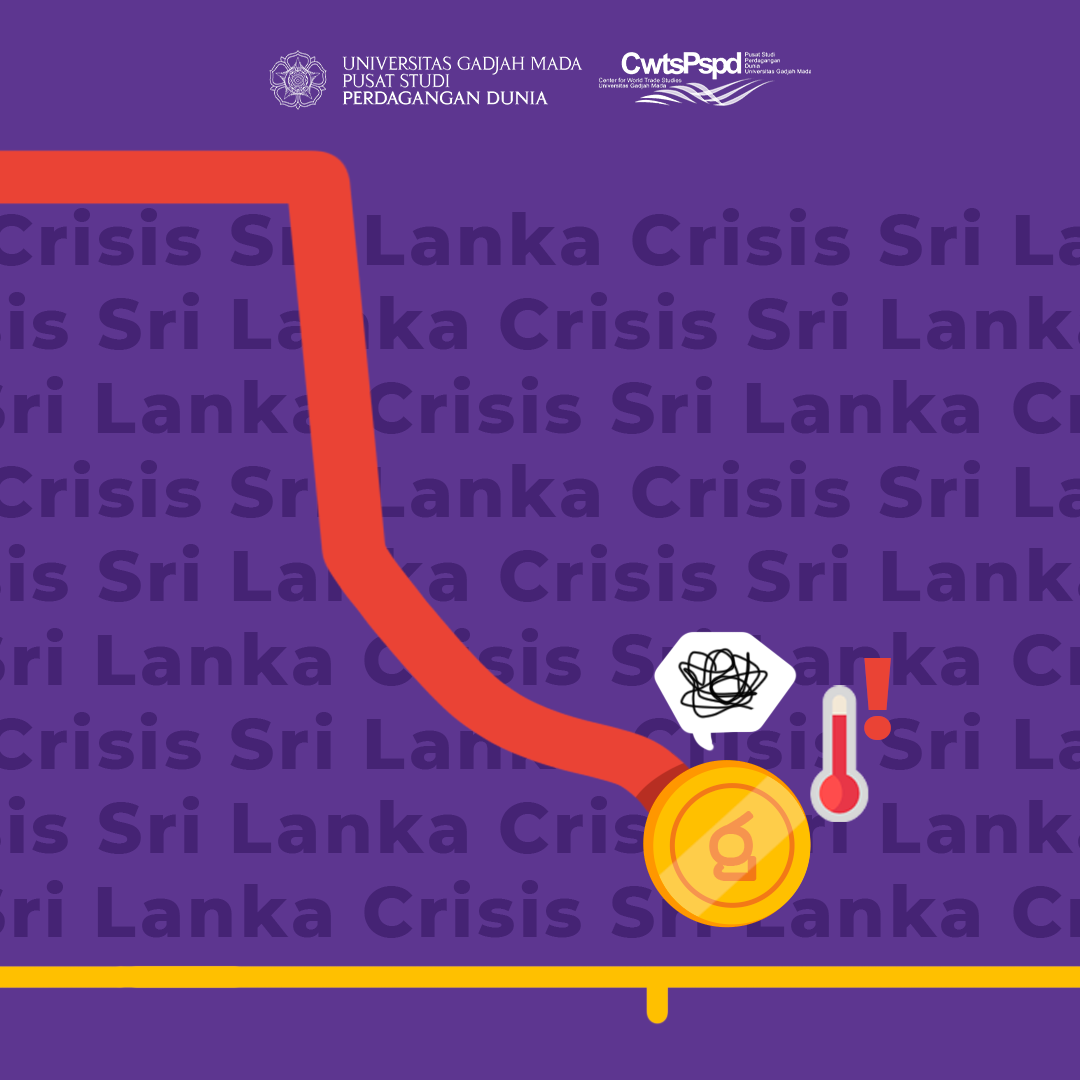
Writer:
Christina Vania Winona
Writer, Center for World Trade Studies Universitas Gadjah Mada.

Editor:
Nabila Asysyfa Nur
Website Content Manager, Center for World Trade Studies Universitas Gadjah Mada.

Illustrated by:
Narinda Marsha Paramastuti
Desainer Grafis, Center for World Trade Studies Universitas Gadjah Mada.
Currently, Sri Lanka is being confronted by mass demonstrations as a form of protest against the economic crisis. Over the past few months, since late 2021, Sri Lanka has been grappling with the worst economic crisis since its independence in 1948. This crisis has caused prices of basic necessities to rise sharply and stocks of basic foodstuffs, fuel, and medicine to run low. The inability of the government of Sri Lanka's President, Gotabaya Rajapaksa, to pay for imports and deliveries of fuel caused by a foreign exchange shortage led to a power outage in parts of Sri Lanka that lasted for 13 hours on Wednesday (30/3/22). The blackout happened in the culmination of a wave of mass protests marked by the blocking of major roads in various cities and calls for prosecution for the sacking of Governor Ajith Cabraal outside the Central Bank of Sri Lanka. The peak of the crisis and demonstrations caused the ranks of the government's cabinet to resign en masse from Tuesday (4/4/22) to Wednesday (5/4/22) yesterday.
Critics say that the root of Sri Lanka’s crisis lies in continued economic mismanagement by governments that created and maintained twin deficits––a situation in which the country's expenditure is greater than its income and when the production of goods and services is insufficient. However, the current economic crisis was accelerated by the adoption of a tax cut policy to stimulate the economy by Rajapaksa during the 2019 general election, shortly before the spread of the COVID-19 virus which also worsened the Sri Lankan economy. According to Murtaza Jafferjee, head of the think-tank Advocata Institute, the policy was a misdiagnosis of the economic problems Sri Lanka was facing at that time.
Sri Lanka's economic crisis is also exacerbated by the failure of Sri Lanka's debt management program whose status depends on aspects of the tourism industry and the payment of money from foreign workers weakened by the pandemic. With the failure of this debt management program, foreign exchange reserves fell by almost 70 (seventy) percent within two years. In addition, the Rajapaksa government's decision to ban all chemical fertilizer products by 2021 has hit the country's agricultural sector and triggered a decline in rice yields which ultimately disrupted Sri Lanka's agricultural production.
To deal with the crisis, the Rajapaksa government has planned and implemented a series of programs. In April, Sri Lanka plans to discuss a loan program with the IMF (International Monetary Fund). Prior to this move, in the last few months, Sri Lanka had gradually devalued its currency––which has been shown to have a negative impact towards society. Besides the assistance from the IMF, the Rajapaksa government is also seeking assistance from China and India, particularly for fuel assistance from India. The shipment of diesel under the $500 million credit line signed with India in February is expected to arrive on Saturday (9/4/22). In addition, Sri Lanka and India have signed a $1 billion credit line for imports of basic necessities, including food and medicine. The Rajapaksa government has also requested at least another $1 billion from New Delhi. Meanwhile, China is currently considering offering a $1.5 billion credit facility and up to $1 billion in separate loans after providing a $1.5 billion CBSL swap and a $1.3 billion syndicated loan to tackle the crisis hitting this archipelagic state. Prior to this aid program, the Sri Lanka government had a total external debt of about $4 billion by 2022, including a $1 billion International Sovereign Bond (ISB) due in July. The ISB makes up the bulk of Sri Lanka's $12.55 billion foreign debt with the Asian Development Bank, Japan, and China among the other major lenders.

